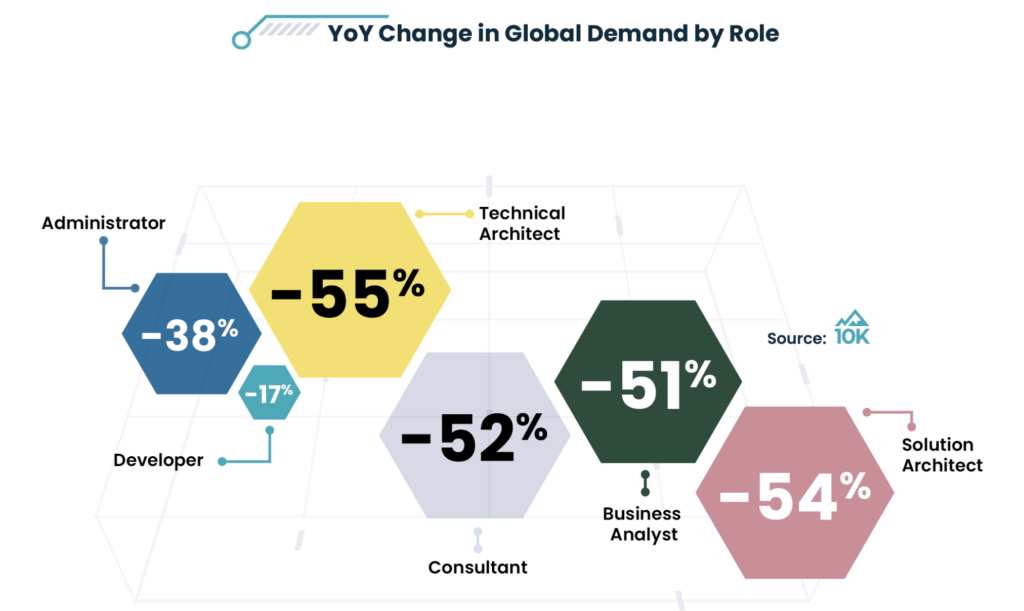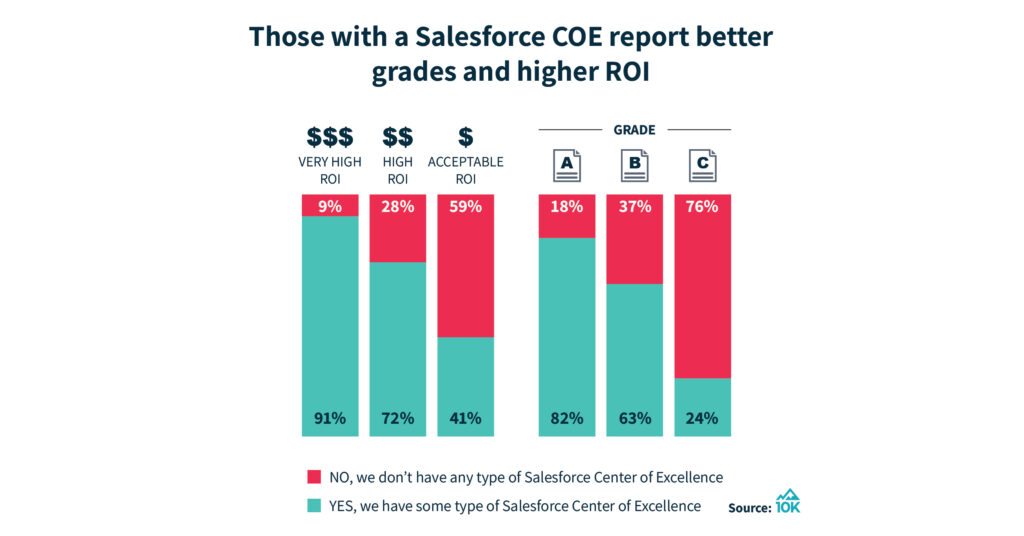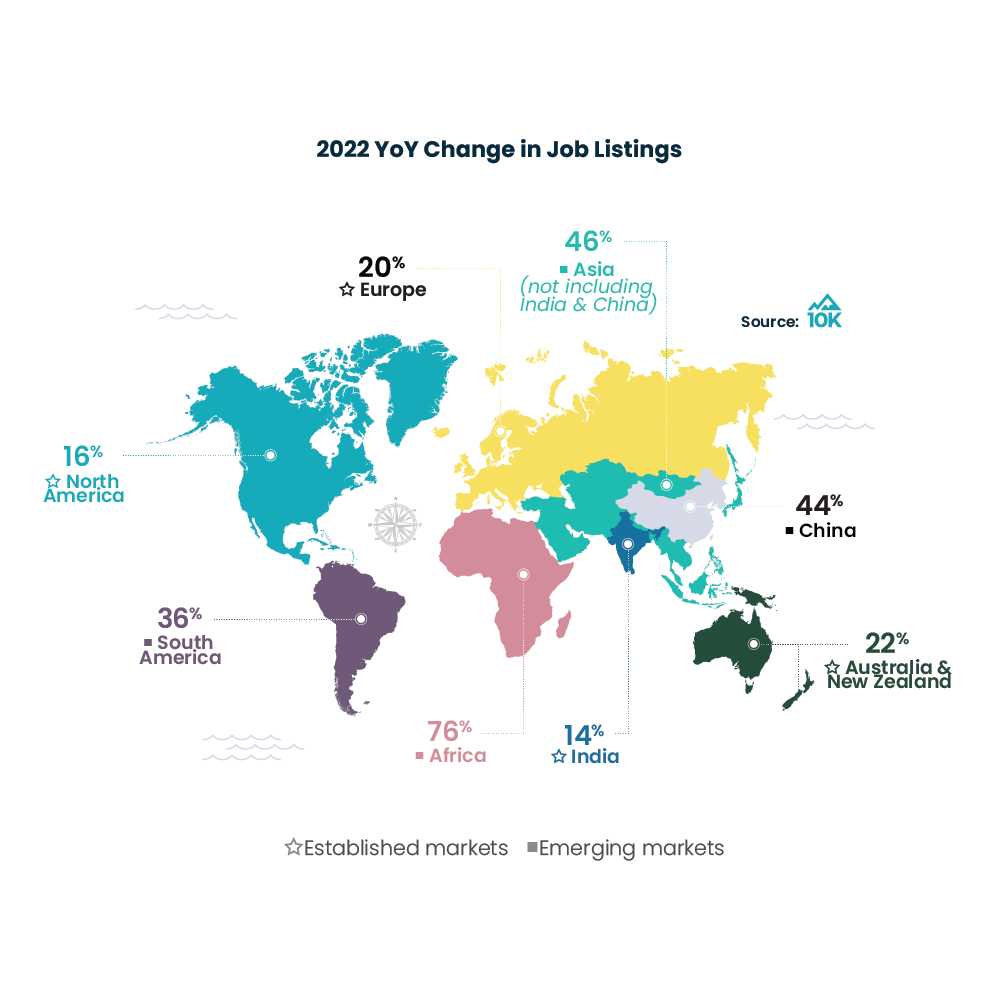Most Salesforce orgs are in a prime position to increase their ROI with the support of an experienced Salesforce Architect. In fact, 82% of Salesforce program owners who report the highest ROI always use an architect.
However, Salesforce Architects are often overlooked, misunderstood, or too difficult to access. Without trusted architectural guidance in place for implementations, migrations, or customizations, most orgs face two significant risks:
- An accumulation of technical debt
- A slower time-to-value from their Salesforce investment
Salesforce Architects hold the key to accelerating productivity and maximizing value, but how and when should you engage one? We love to debunk the misconception that you need to hire a full-time, in-house architect to make an impact. The reality is that relatively short engagements—even just 8 hours of an architect’s time—move the needle. Architects can quickly provide solution assurance, org clarity, process blueprinting, project roadmaps, and (maybe most importantly) peace of mind.
Here are five high-impact areas where an on-demand Salesforce Architect can quickly drive progress.
Streamline and modernize automations
The Problem: As requirements evolve, legacy workflow rules and process automations become brittle, inefficient, and unable to handle complex logic.
The Value: Architects help refactor automations using robust tools like Apex and Flow, enabling sophisticated requirements with improved performance, testability, and long-term maintainability.
Migrate from legacy Salesforce user experience technologies
The Problem: Companies still relying heavily on classic Salesforce UI face user adoption challenges, fragmented experiences, and potential technical debt.
The Value: Architects plan and execute comprehensive migrations to Lightning Experience, modernizing the UX/UI across objects, apps, dashboards, and more.
Build a unified integration strategy
The Problem: Over-reliance on point-to-point integrations creates technical debt, fragmented data, and an inability to adapt as integration needs change.
The Value: Architects design robust integration architectures leveraging API management, event-driven patterns, change data capture, and other modern capabilities.
Implement strategies for org merges, splits, and environment management
The Problem: As companies evolve, reorganizations and M&A activities create data fragmentation and org complexity that becomes unmanageable.
The Value: Architects provide expertise in planning and executing org mergers/splits, managing multiple environments, and implementing scalable data migration strategies.
Analyze and improve security architecture
The Problem: As requirements change, static security models create governance risks and compliance issues that can become burdensome.
The Value: Architects holistically assess sharing rules, permissions, and security models to refine architectures that balance security, compliance, and access needs.
While not exhaustive, these examples illustrate how certified architects apply expertise across process design, UX, integration patterns, data migration, security modeling, and more to rapidly clear roadblocks. A certified Salesforce Architect is the antidote to short-sighted solutions that will gradually accumulate into expensive technical debt. Their oversight and expertise guarantee long-term scale, agility, and ROI.
Where can I find an experienced Salesforce Architect?
Finding an experienced architect available to work on your Salesforce org is often expensive and time-consuming. Our 2023 Salesforce Talent Ecosystem Report found that Salesforce Technical Architects still make up just 1% of the overall talent supply. Additionally, it takes technical specifics and knowledge to vet an architect properly. So, while it may be tempting to use UpWork, the reality is that finding a skilled architect is like finding a needle in a haystack. The good ones know their worth and provide their expertise elsewhere.
Large consultancies are one such place. However, after you’ve run the gauntlet of the traditional sales and SOW process to get in their queue, it can still take 6-9 weeks for an architect to get started. Finding a specialized architect with immediate availability is essential.
That’s where certified Salesforce Architects who work on demand as independent consultants come into play. Independent architects have the technical prowess and freedom to move your Salesforce initiative forward quickly. They also don’t have to deal with red tape or bureaucracy. Their sole focus is paving the way for greater efficiency, scalability, and innovation.
Instant Architect™ accelerates Salesforce productivity
Do you have a stalled Salesforce initiative that needs a game plan to move forward? Just 8 hours with Instant Architect™ can get your team back on track within days. Click here to get started.




